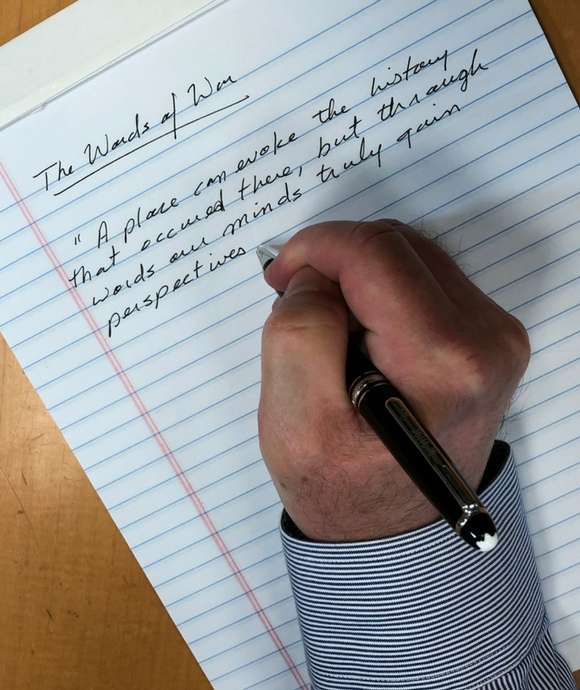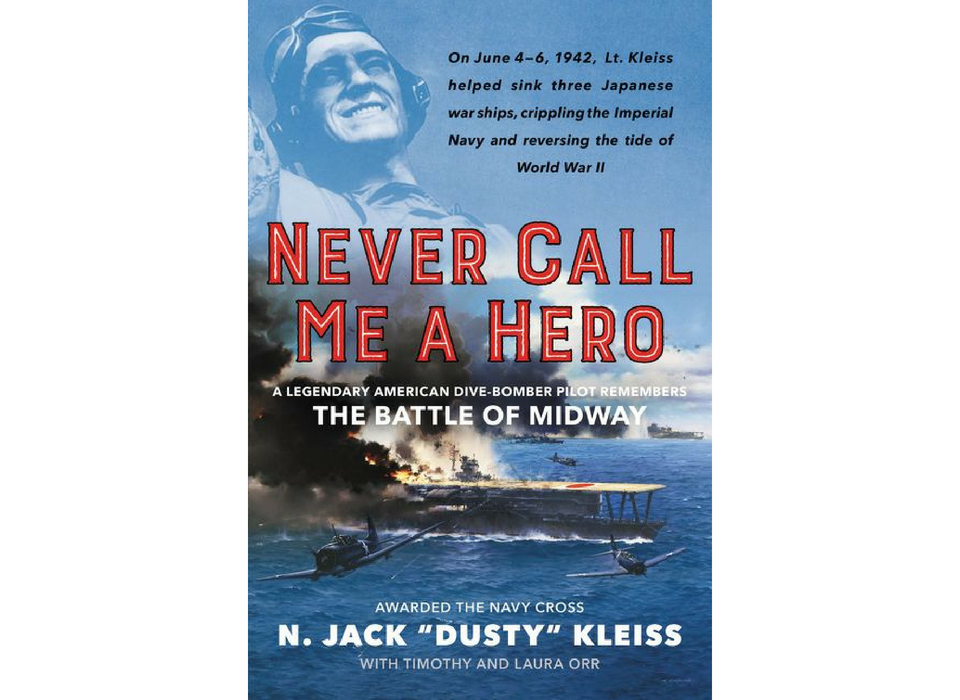“Where were the Zeroes? We could not see a single enemy fighter in the sky. More than 19,000 feet below us, I could see Akagi and Kaga, both cruising into the wind, a perfect position for our dives. So long as the carriers did not make any abrupt turns, no crosswind could throw our bombs wide. I breathed a sigh of relief.
"We had found the enemy fleet unprotected.
"We were captivated by the sight of the pristine carriers beneath us. Dick Best would tell me that he gawked with fascination at the colors of Akagi’s flight deck. It was yellow, with a big red circle painted on the bow, no camouflage at all. It seemed arrogant to him. Why else did the Japanese paint their decks with a bull’s-eye, unless they were overconfident? ENS Lew Hopkins of Bombing Six later remembered the sight as ‘something that is impressed on your mind.’ Decades later, he claimed he could still close his eyes and picture the Japanese carriers clear as day. My rival, LT Dickinson, who was cruising two planes behind me, later explained, ‘The target was utterly satisfying. The squadron’s dive [position] was perfect. This was the absolute. After this, I felt anything would be just anti-climax.’ I cannot say that I had similar thoughts running through my head. Only one word repeated over and over: ‘Survive!’ I wanted only one thing in this life. I wanted to live through this and return to Jean.”
N. Jack “Dusty” Kleiss, Never Call Me a Hero, p. 199-200.
It was the moment when all our fortunes changed. This passage from Dusty Kleiss’s memoir recounting his life and the Battle of Midway is memorable not only for the moment it portrays and the desires of a young naval aviator only to survive to return home to his beloved as he faces an attack dive on the enemy fleet. It is memorable because the fortunes of battle were going terribly against the Americans on the morning of June 4, 1942. In a greater sense, fortune had flowed against the United States in a virtually unbroken stream of defeats ever since the Japanese surprise attack on Pearl Harbor six months before on December 7, 1941. All that history was now set to be reversed. What remained in the moment was for the relatively small group of men in the planes to execute their attack.
The origins of the Battle of Midway actually went back several months with the plans of Admiral Yamamoto, the mastermind behind the Pearl Harbor attack. After the Japanese had swept to an immense sea empire in Asia and the southwestern Pacific, even attacking Australia in February 1942, Yamamoto looked for the means to secure Japan’s gains. He knew that the American industrial economy would crush Japan in the long term, and with Japanese military doctrine advocating a concentrated, single blow in battle that would decide all issues, he made plans to seek that blow at Midway. Originally conceived with using all six of the large aircraft carriers that attacked Pearl Harbor—the Kido Butai—the plan called for an attack on the Marine base at Midway, which Yamamoto believed would then lure the remaining American carriers out from Pearl Harbor to battle, and destruction. The Japanese Naval General Staff approved of Yamamoto’s plan on April 5, after Yamamoto threatened to resign when questions were raised. The plan went to the Emperor on April 16 for his approval. It should be noted that the plan was not debated; plans only went to the Emperor when there was consensus.
But the military course of the war would impact the Japanese. On April 18, 1942, the Doolittle Raid launched by the Americans from carriers off Japan not only proved that the Japanese were vulnerable at home but that the American carrier fleet remained dangerous as long as it was afloat. It added urgency to the Japanese military’s mindset. Then on May 7–8, 1942, the Battle of Coral Sea was fought, and for the first time neither combatant fleet saw the other—all operations were conducted through the air. The Japanese lost a light carrier, but more importantly the major carriers Shokaku and Zuikaku sustained damage that the Japanese decided was sufficient to take them out of the upcoming Midway operation. The Americans suffered the loss of a major carrier, Lexington, and the Yorktown also sustained damage that it was estimated would take three months to repair.
Even with two carriers sidelined, the showdown between the carrier fleets at Midway appeared to still heavily favor the Japanese and their four carriers against the two operational American carriers, Enterprise and Hornet.
But there was one other element to the alignment of forces that would have an impact before the fleets sailed. The Americans were intercepting the coded messages of the Japanese, and at Station Hypo at Pearl Harbor a group of cryptanalysts believed they had identified the next Japanese target as Midway. Through a clever ruse concerning a fake fresh-water crisis, it was confirmed that the letters AF were Midway Island in the Japanese code, along with an anticipated arrival date of the Kido Butai.
It was enough for Admiral Chester Nimitz to lay a trap. He would position his carriers to the northwest of Midway to ambush the Japanese attack. Further, he arranged for the damaged Yorktown to undergo three days of frantic emergency repairs in order to join the battle.
All of this came before the moment Dusty Kleiss found himself above the unprotected carriers of the Kido Butai on the morning of June 4, 1942. But there was more to the story of that morning, and those events will be the subject of the next Words of War post.
Note: This is the first of a series of four posts on the Dusty Kleiss memoir. Read Part Two. Part Three. Part Four.

“A place can evoke the history that occurred there, but through words our minds truly gain perspectives and understanding of what it was like to know, feel, experience, hope, fail, triumph, and live through events from which we ourselves were absent. The written word is our most intricate map to retrace and reconstruct what we think happened, and ultimately brings us back to ourselves.”
– Keith Huxen, PhD, Senior Director of Research and History, The National WWII Museum
Keith Huxen
Keith is the former Senior Director of Research and History in the Institute for the Study of War and Democracy at The National WWII Museum.
Cite this article:
MLA Citation:
APA Citation:
Chicago Style Citation:





![Max Fuchs, New York City cantor, sings as Rabbi Sydney [sic] Lefkowitz, Richmond, VA, conducts the first Jewish services from Germany.](/sites/default/files/styles/max_650x650/public/2025-10/image1.jpg)



